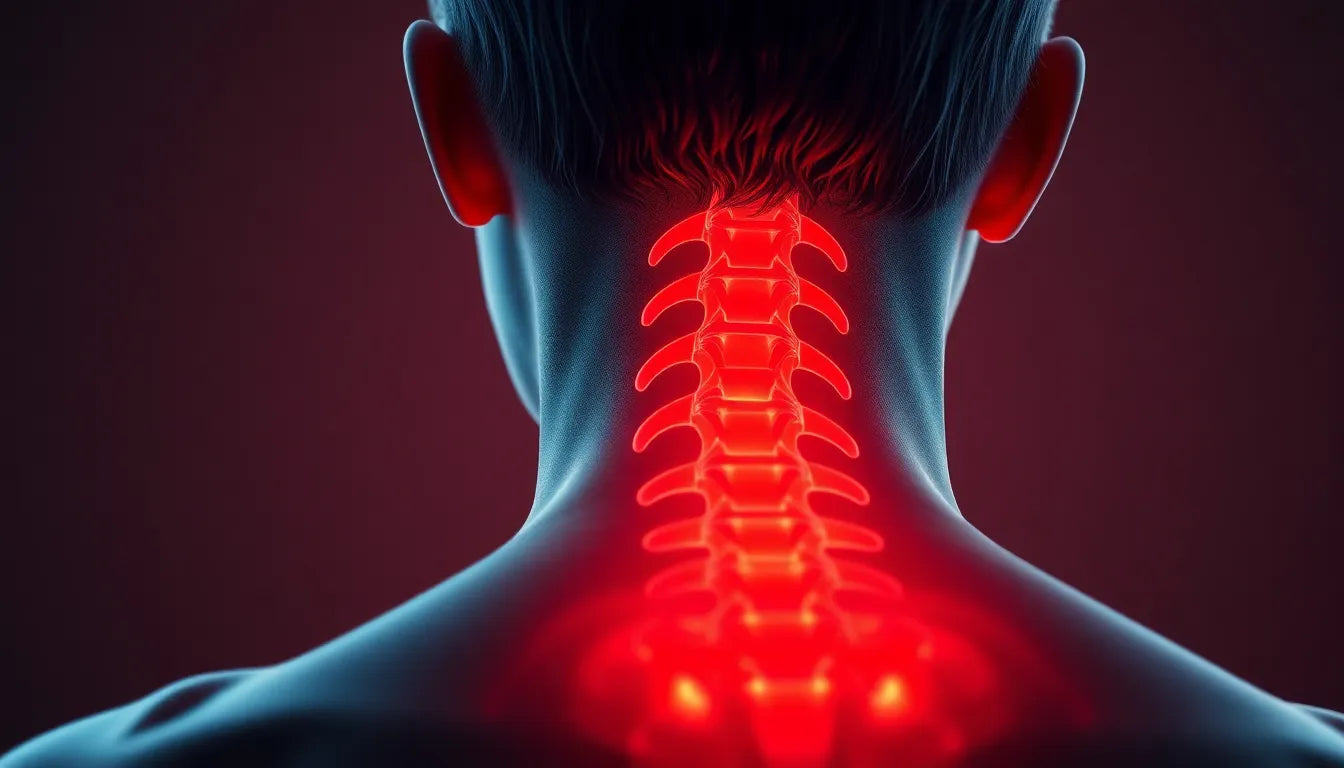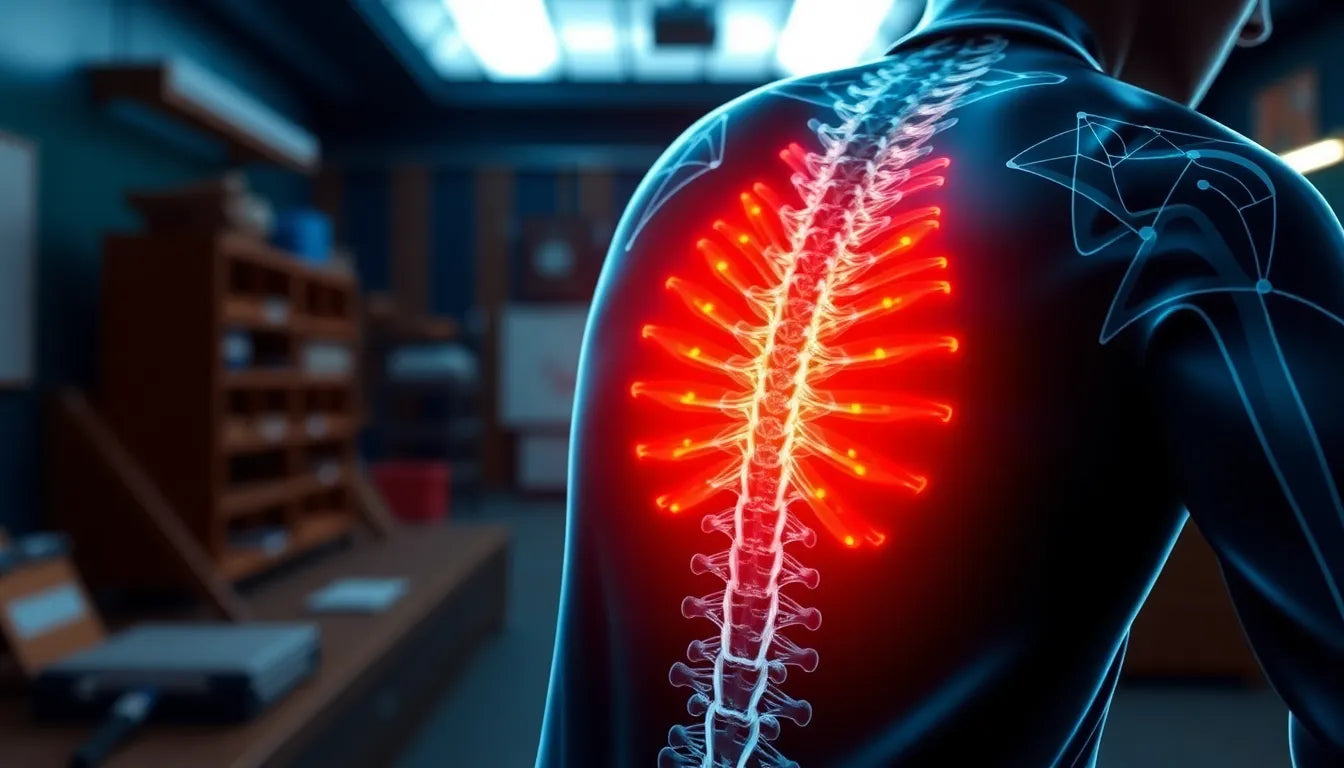Dealing with a herniated disc at the L5 level can be incredibly challenging, especially when it comes to finding a comfortable sleeping position. The discomfort and pain associated with an L5 herniated disc can significantly disrupt sleep, making it difficult to get the rest your body needs to heal and recover. Understanding how to position yourself properly during sleep is crucial for alleviating discomfort and promoting a more restful night.
importance of sleep posture for l5 herniated disc
Proper sleep posture plays a vital role in managing the pain and discomfort caused by a herniated disc. By reducing pressure on the spine, the right sleeping position can not only ease pain but also improve overall sleep quality. Small adjustments, such as using pillows to support your body, can make a significant difference in reducing the strain on your back and promoting spinal alignment. These adjustments are essential for anyone suffering from an L5 herniated disc, as they can lead to more restful and pain-free sleep.
what to expect in this guide
In this post, we will explore the best sleeping positions for those suffering from an L5 herniated disc. You'll discover recommended positions such as sleeping on your back, side, or in a fetal position, and learn why stomach sleeping is generally discouraged. Additionally, we'll provide tips to enhance comfort, like using pillows strategically and choosing the right mattress. Finally, we'll answer some frequently asked questions to help you make informed decisions about your sleep habits. By the end of this guide, you'll have the knowledge you need to adjust your sleep posture for optimal relief and a better night's sleep.
recommended sleeping positions for l5 herniated disc relief
Finding the right sleeping position can significantly alleviate discomfort for those suffering from an L5 herniated disc. Here are some of the best positions to consider:
sleeping on your back
Sleeping on your back is often recommended for individuals with an L5 herniated disc. This position supports the natural curve of the spine and helps distribute weight evenly, reducing pressure on the herniated disc. To enhance comfort and maintain spinal alignment, place a pillow under your knees. This simple adjustment can prevent unnecessary strain on your lower back, promoting a more restful sleep.
sleeping on your side
Another effective position is sleeping on your side. This position can help align the spine and reduce pressure on the herniated disc. For optimal comfort, use a pillow between your knees to maintain proper alignment. Drawing your legs slightly towards your chest can further enhance spinal alignment and alleviate pressure on the lower back.
the fetal position
The fetal position, where you tuck your knees into your chest while lying on your side, can also provide relief. This position helps reduce spinal bending and opens up joint spaces in the spine, potentially easing discomfort. It is particularly beneficial for those who find side sleeping comfortable but need additional support for their back.
avoiding stomach sleeping
Stomach sleeping is generally discouraged for individuals with an L5 herniated disc, as it can strain the neck and lower back, potentially exacerbating symptoms. However, if you find it difficult to avoid this position, consider placing a pillow under your hips and lower stomach to reduce strain on your spine.
additional recommendations for a comfortable sleep
Beyond choosing the right sleeping position, other factors can contribute to a more comfortable and restful sleep:
mattress support
The type of mattress you use plays a crucial role in managing herniated disc symptoms. A medium-firm mattress is often recommended as it provides the necessary support while contouring to the body's shape. If your mattress is too soft or too firm, consider adding a memory foam topper to enhance comfort and support.
consultation with healthcare professionals
While adjusting your sleep position and mattress can offer significant relief, it's essential to consult with healthcare professionals for personalized advice. They can provide tailored solutions and therapeutic interventions that are crucial for effectively managing your symptoms. Don't hesitate to seek professional guidance to ensure you are taking the best possible steps for your recovery.
By implementing these recommended sleeping positions and additional tips, you can significantly improve your sleep quality and reduce the discomfort associated with an L5 herniated disc. Remember, small adjustments can lead to significant relief, so take the time to experiment with different positions and find what works best for you.
Additional Comfort Measures for L5 Herniated Disc Relief
While finding the right sleeping position is crucial for managing an L5 herniated disc, there are additional comfort measures that can further enhance your sleep quality and alleviate discomfort. These measures focus on optimizing your sleep environment and selecting the right accessories to support your spine.
Pillow Selection
The choice of pillow plays a significant role in maintaining proper neck alignment and reducing pressure on the spine. Opt for a pillow that supports the natural curve of your neck. Memory foam or cervical pillows are often recommended as they contour to your head and neck, providing consistent support throughout the night. Adjust the pillow height to ensure your neck remains aligned with your spine, whether you are sleeping on your back or side.
Optimizing Your Sleep Environment
Creating a supportive sleep environment can significantly impact your comfort and overall sleep quality. Consider the following elements:
- Temperature Control: Keep your bedroom cool, as a lower temperature can promote deeper sleep. Aim for a temperature between 60-67°F (15-19°C).
- Noise Reduction: Use earplugs or a white noise machine to minimize disturbances from external sounds, ensuring a more restful sleep.
- Lighting: Block out light with blackout curtains or an eye mask to enhance melatonin production and improve sleep quality.
Concluding Thoughts on Sleeping with an L5 Herniated Disc
Finding the right sleeping position and making necessary adjustments to your sleep environment can significantly improve your sleep quality and reduce the discomfort associated with an L5 herniated disc. Experiment with different positions, such as sleeping on your back or side, and incorporate additional comfort measures like pillow selection and environmental adjustments. These changes, combined with professional medical advice, can lead to a more restful and pain-free night.
Remember, managing a herniated disc is a personalized journey. What works for one person may not work for another, so be patient and attentive to your body's responses. Consulting healthcare professionals for tailored advice can provide further guidance and ensure you are taking the best steps for your recovery.
Frequently Asked Questions
What is the best sleeping position for a herniated disc?
Sleeping on your back with a pillow under your knees is often recommended to maintain spinal alignment and reduce pressure on the disc.
Can a mattress affect my herniated disc symptoms?
Yes, a medium-firm mattress can provide the necessary support and help alleviate symptoms by maintaining proper spinal alignment.
Should I avoid sleeping on my stomach with a herniated disc?
Generally, yes, as it can strain the neck and lower back. If unavoidable, use a pillow under the hips to reduce strain.
How can I make sleeping on my side more comfortable?
Use a pillow between your knees and draw your legs slightly toward your chest to maintain spinal alignment and reduce pressure.
When should I consult a doctor about my herniated disc?
If pain persists or worsens despite trying different sleeping positions, it's important to seek professional medical advice for further evaluation and treatment.


















